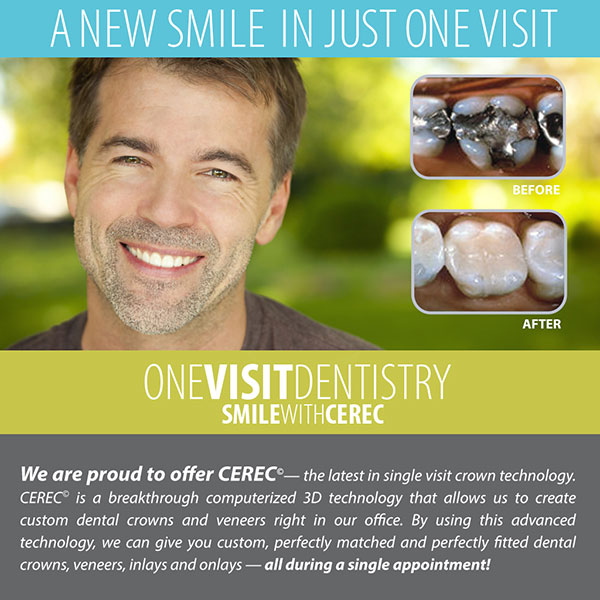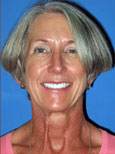
The creation and placement of a custom-designed dental crown is one of the most commonly performed treatments in dentistry. Dental crowns fit over the entire tooth and are typically used to reinforce a tooth that is heavily damaged or decayed. They are also routine finishing touches for root canal procedures and dental implants. In the past, crowns and other types of dental restorations traditionally required a time-consuming process that could ultimately take weeks. With advances such as the CEREC® in-office milling system, that process can be significantly minimized.
The biggest difference between CEREC® dental crowns and those that are sent off to a dental lab for creation is the time it takes for the restoration to be produced. CEREC® crowns can be made right here at the office of our cosmetic dentist, Dr. Jimmy Wu, in a single appointment. Lab-made crowns can take several days or even weeks before they are back at our office and ready to place on the teeth. CEREC® dental crowns also do not require you to have a physical dental impression, which necessitates biting down on a gooey, uncomfortable putty for several minutes. With CEREC®, the impression is taken digitally and fed into a computer program, which Dr. Wu will use to create a precise, naturally-looking dental crown.
Dr. Wu says CEREC® crowns are ultimately far superior to Lab made crowns. “Studies show that CEREC® crowns are 50% more accurate than a lab-fabricated crown. The process in which a lab crown is made is antiquated and flawed from the beginning. The accuracy of the impression varies depending on a number of factors:
- The quality of the impression material
- The amount of saliva in the mouth distorting the impression
- The position of the tooth and outline of the arch (certain tooth positions and arch shapes make it hard for the one-fits-all type of tray to take a good impression; in some cases, a custom-fabricated tray is needed just to fit the patient’s mouth)
- The skill of the dental assistant
Even if these things are as perfect as can be, it’s still not as accurate as a direct 3D scan of the mouth into the computer.”
“Then, the modeling process [for lab-made fabrications] is also flawed. For the lab-fabricated crown, a stone model is made from the impression. Powder and water are mixed and placed into the impression to create this stone model. There is always a variance with the powder/water ratio, which can cause further distortion of the accuracy of replicating a person’s jaw and teeth. To complicate things further, a lab technician has to melt hot wax onto the tooth or teeth of the stone model that are being crowned and create from scratch the shape of a new tooth or new teeth – again, another variable depending on the skill of the lab technician creating the wax crown. There are so many steps that could go wrong through the whole process.
With CEREC®, it is scanned accurately within a tenth of a millimeter and then the crown is milled in less than five minutes. The crown oftentimes needs no adjustments and is placed the same day. This is especially beneficial for multiple crowns as the computer will design everything as ideal as possible, given the patient’s bite and current dentition.
CEREC® can even make bridges, veneers, implant crowns, and custom implant abutments. I never send anything to a lab, and I have not done so for the past 12 years. Even smile makeovers can often be done in a single visit. Bridge work currently takes two visits because the material is milled in a lesser form; however, new technology has been invented that is designed to reduce this time to 15 minutes. Once the technology becomes available later this year, we’ll even be able to complete the bridge treatment process in a single visit as well!”




 Before
Before
 After
After